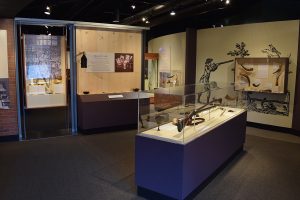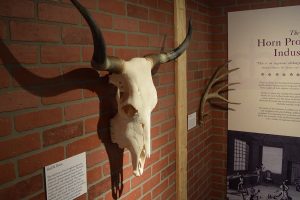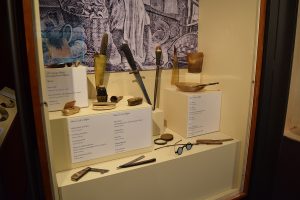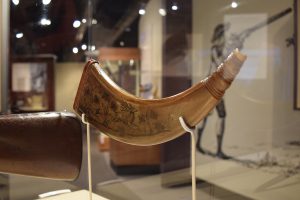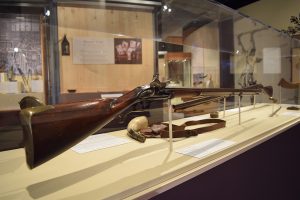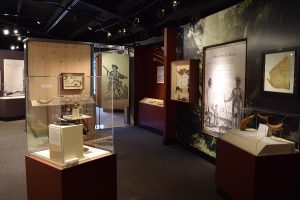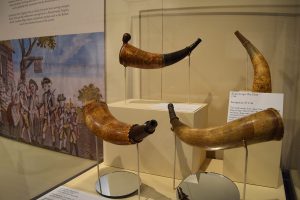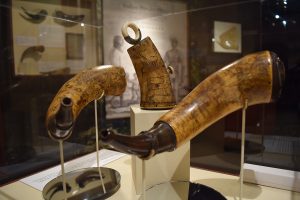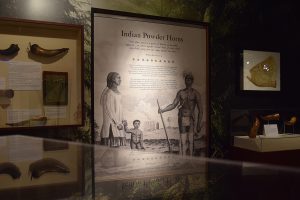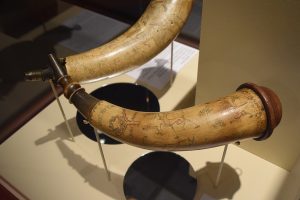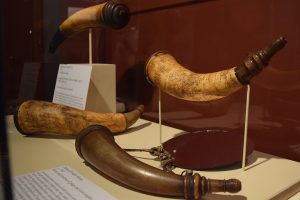From Maps to Mermaids: Carved Powder Horns in Early America
JUNE 2017 – OCTOBER 2019 This exhibit explored numerous powder horns made or used on the Pennsylvania and Virginia frontiers, their practical uses, and their representation of early American folk art.
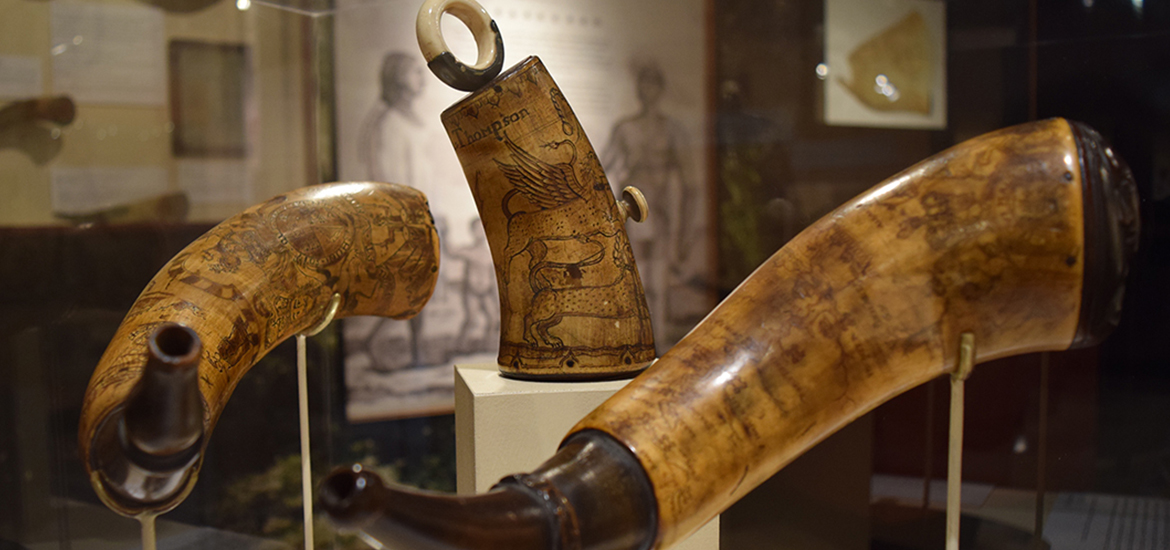
FROM MAPS TO MERMAIDS
Few objects from colonial America had such a personal connection to their owners as the powder horns used by soldiers, settlers, and American Indians to store the gunpowder necessary for their survival.
Beginning this Fourth of July weekend, the Fort Pitt Museum – part of the Senator John Heinz History Center museum system – will reveal the stories behind these delicately carved objects as part of a new exhibition, From Maps to Mermaids: Carved Powder Horns in Early America, which opens this Saturday, July 1.
In a world where firearms were necessary tools, the powder horn – made from the lightweight and hollow horn of a cow – served as the constant companion of thousands of frontier residents. While powder horns kept gunpowder dry, many owners also recognized the smooth surface of the horn as the ideal place to leave their mark. They etched names, dates, maps, and war records, as well as purely whimsical figures, into the objects.
Many carved powder horns found in Pennsylvania in recent decades illustrate stations along the Forbes Road from Philadelphia to Pittsburgh and include some of the earliest first-hand depictions of Fort Pitt.
Surviving in large numbers, carved powder horns represent early American folk art in its purest form and serve to illuminate the past.
Highlights of the From Maps to Mermaids exhibition include:
- More than 60 authentic artifacts spanning from the 17th century to the 19th century, including more than 40 rare powder horns and flasks;
- Two powder horns by an anonymous 18th century engraver so talented that collectors have dubbed him the “Master Carver;”
- A 1764 powder horn depicting the Forbes Road between Philadelphia and Pittsburgh. The horn is signed by Jno. Fox, who may have been a soldier in the Royal American Regiment stationed at Fort Pitt; and
- An American Indian-carved horn with numerous depictions of animals, including a Horned Underwater Panther, a mythical creature that appears in the beliefs of Great Lakes and Eastern Woodland Indians.
Exhibit Gallery
